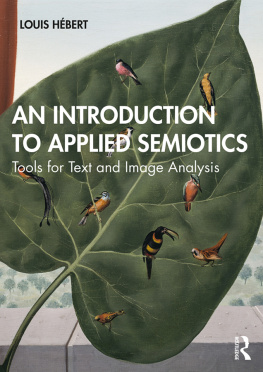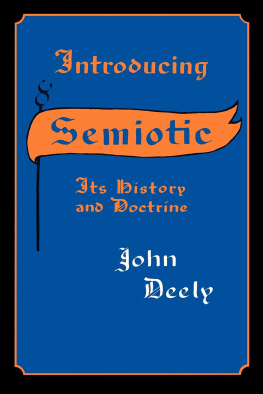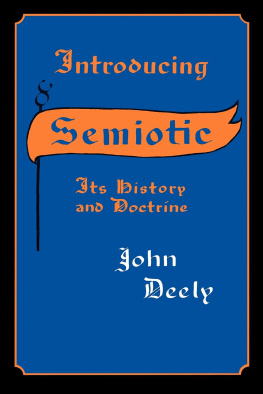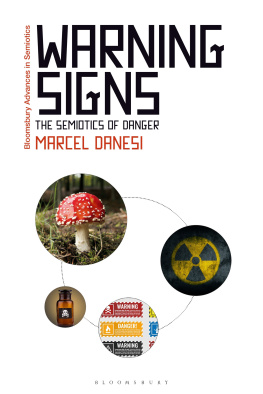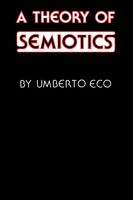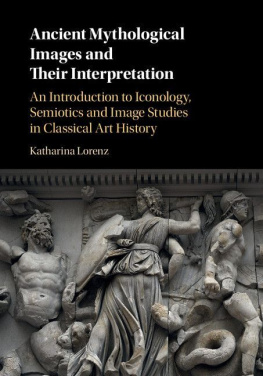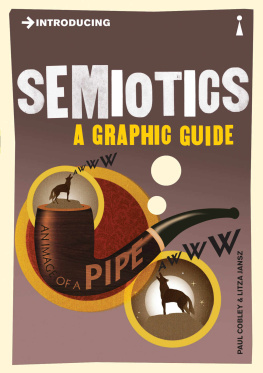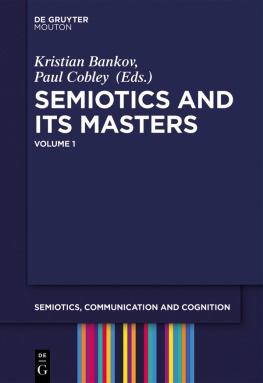An Introduction to Applied Semiotics
An Introduction to Applied Semiotics presents nineteen semiotics tools for text and image analysis. Covering a variety of different schools and approaches, together with the authors own original approach, this is a full and synthetic introduction to semiotics. This book presents general tools that can be used with any semiotic product. Drawing on the work of Fontanille, Genette, Greimas, Hbert, Jakobson, Peirce, Rastier and Zilberberg, the tools deal with the analysis of themes and action, true and false, positive and negative, rhythm, narration and other elements.
The application of each tool is illustrated with analyses of a wide range of texts and images, from well-known or distinctive literary texts, philosophical or religious texts or images, paintings, advertising and everyday signs and symbols. Each chapter has the same structure summary, theory and application and includes exercises and discussion questions, making it ideal for course use.
Covering both visual and textual objects, this is a key text for all courses in semiotics and textual analysis within linguistics, communication studies, literary theory, design, marketing and related areas.
Louis Hbert is a professor of literature at the Universit du Qubec Rimouski (UQAR, Canada). His research focuses primarily on semiotics (textual and visual), interpretive semantics, the methodology of literary analysis, Magritte and Buddhism.
An Introduction to Applied Semiotics
Tools for Text and Image Analysis
Louis Hbert
Translated from French by Julie Tabler

First published 2020
by Routledge
2 Park Square, Milton Park, Abingdon, Oxon OX14 4RN
and by Routledge
52 Vanderbilt Avenue, New York, NY 10017
Routledge is an imprint of the Taylor & Francis Group, an informa business
2020 Louis Hbert
The right of Louis Hbert to be identified as author of this work, and of Nicole Everaert-Desmedt for Chapter 17, and Lucie Guillemette and Cynthia Lvesque for Chapter 18, has been asserted in accordance with sections 77 and 78 of the Copyright, Designs and Patents Act 1988.
All rights reserved. No part of this book may be reprinted or reproduced or utilised in any form or by any electronic, mechanical, or other means, now known or hereafter invented, including photocopying and recording, or in any information storage or retrieval system, without permission in writing from the publishers.
Trademark notice: Product or corporate names may be trademarks or registered trademarks, and are used only for identification and explanation without intent to infringe.
British Library Cataloguing-in-Publication Data
A catalogue record for this book is available from the British Library
Library of Congress Cataloging-in-Publication Data
Names: Hebert, Louis, 1961 author. | Tabler, Julie, translator.
Title: An introduction to applied semiotics : tools for text and image analysis / Louis Hebert ; translated from the French by Julie Tabler.
Other titles: Dispositifs pour lanalyse des textes et des images. English
Description: 1. | New York : Taylor and Francis, 2020. | Includes bibliographical references and index. | Translated from French.
Identifiers: LCCN 2019038128 | ISBN 9780367351113 (hardback) | ISBN 9780367351120 (paperback) | ISBN 9780429329807 (ebook)
Subjects: LCSH: Semiotics. | Semiotics and literature. | Semiotics and art.
Classification: LCC P99 .H32513 2020 | DDC 401/.4dc23
LC record available at https://lccn.loc.gov/2019038128
ISBN: 978-0-367-35111-3 (hbk)
ISBN: 978-0-367-35112-0 (pbk)
ISBN: 978-0-429-32980-7 (ebk)
Typeset in Berthold Akzidenz Grotesk
by ApexCovantage, LLC
Contents
The standard symbols shown in the table below are used to distinguish between (1) the sign (the word or lexia) concrete; (2) the signified that it conveys, concrete; (3) the signifier associated with this signified, concrete, which is composed of the phonemes k-o-n-k-r-E-t and the graphemes (letters) c-o-n-c-r-e-t-e; (4) the seme /concrete/ (in knife, for example) or (5) the isotopy /concrete/ (in steel knife, for example); and (6) the semantic class //concrete// (which contains the signifieds house, cat and wind, for example).
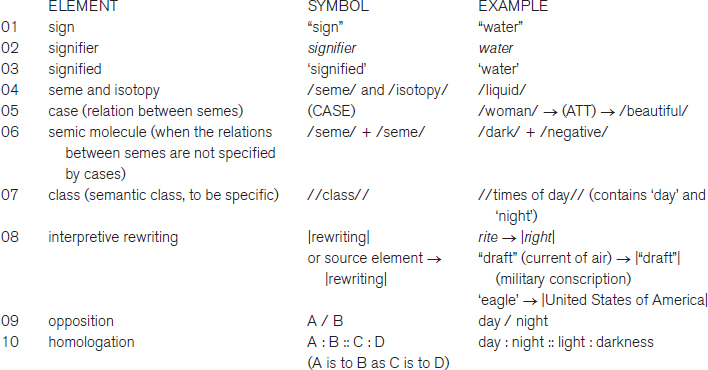
The intent of this book is not to present one or more systems of theoretical semiotics, but to extract a few tools for text and image analysis from these systems, explain and refine them and illustrate their use.
The term tool refers here to a preestablished analytical device developed from a relatively simple concept network, which, despite its simplicity, can provide a rigorous, accurate analysis (although an admittedly segmented one).
Semiotics, which is concerned with the study of signs, is obviously more than just an inventory of these tools (see are descriptive (the empirical approach, as in linguistics), formal (the logical approach), interpretive (the hermeneutic approach) and explanatory (the speculative approach, as in philosophy), we should point out that with analytical tools, the emphasis is on formalization.
Analytical tools appear to be underrated. Along with the postmodern decline of formalism if not of rationalism they have become suspect, partly because they arose in an environment of theoretical hegemony and dogmatism. This is easily addressed by isolating them from their original context and revising as needed. In an age of complexity, as we call it, analytical tools are seen as reductive. However, they are quite adequate for what they are and what they can do. Furthermore, analytical tools are worth using if for no other reason than they can often provide a rational and methodological initial approach to a text or an image.
Our choice of analytical tools is somewhat arbitrary, defined by our reading, inclinations and analytical experiments. Most of the tools we have selected belong to four theoretical families: the school of semiotics established under A.J. Greimass influence, the school of semiosemantics that developed under F. Rastier, the school of R. Jakobson, and the school of C.S. Peirce. Some of our tools are very general (e.g., homologation), and others are more specific (e.g., ontological and veridictory dialogics); some apply mainly to texts (e.g., the veridictory square), and others apply to images as well (e.g., semic analysis).
Each tool is the subject of a chapter, structured in the following way: (1) summary, (2) theory, (3) application(s).
Although our text is indeed addressed to students of semiotics, and more broadly, to those who want to know more about methods of text and image analysis, we believe there is also something of value in it for the specialist. Perhaps this would simply be the fact that we have often found it necessary to break with the status quo approach used in the theoretical systems where these tools originated in order to increase their functionality, either by eliminating traditionally used constraints that we have deemed unnecessary, or by adding substantial enhancements. The indented notes and the parallel use of technical and classroom terminology provide a way to use the text at different levels with varying degrees of difficulty. Within the limits of practicality, the presentation of each analytical tool is an autonomous entity, limiting the number of references to other chapters; as a result, a certain amount of repetition (whose educational value is well known) is inevitable. The index can be used for a more specialized reading of the text, to learn more about a concept or a term.

